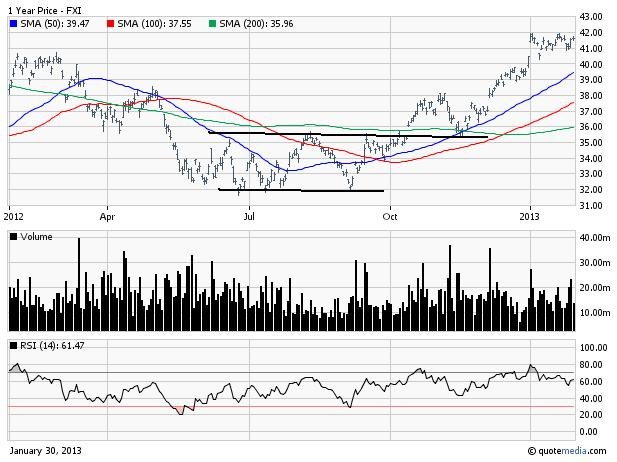A Closer Look At iShares New Pricing
Post on: 6 Апрель, 2015 No Comment

By Rachael Revesz | 27 September, 2013
A closer look at S&P 500 exchange-traded funds (ETFs) on the London Stock Exchange (LSE) reveals that iShares comes up trumps with the lowest bid offer spread, but lags the competition on overall costs.
iShares recently revamped its ETF offering after consolidating with Credit Suisse, and lowered costs on 12 products. For the S&P 500 ETF and the FTSE 100 ETF, this meant lowering the total expense ratio (TER) – but only for the accumulation share classes – from 0.4 percent to 0.15 percent. The distribution share classes remained untouched at 0.4 percent.
“There are no changes to the distributing versions of these exposures, which continue to meet the needs of investors who put a premium on greater liquidity and capital markets depth for their shorter-term needs,” read a statement from iShares.
So how do the share classes compare for the iShares S&P 500 UCITS ETF?
The distribution share class has $14.8 (€10.9) billion of assets under management (AUM) with a spread of around 0.05 percent. Meanwhile, the CSP1 accumulation share class has a higher spread of 0.13 percent and less assets under management at $932 million. It was formerly a Credit Suisse ETF. The second SACC accumulation share class has assets of $391 million and a spread of 0.12 percent.
Investors should note that the spread fluctuates throughout the day and depends on trading, markets and the underlying shares.
“You don’t have to have a high TER for a tight bid offer spread,” said Ben Seager-Scott, senior research analyst at Bestinvest. “iShares is using their dominant position to try and force investors to pay this premium TER for a liquid product but I would say the competition is heating up.”
According to a Bestinvest study using Reuters data, over the last month, of all physically replicated S&P 500 ETFs on the LSE, iShares’ ETF had the tightest bid offer spread average of six basispoints, while HSBC was 15 bps, SPDR was 13 bps and Vanguard was 10 bps.
“That has changed quite a lot: if you look over the last 18 months, iShares had a 5-10 bps range and the closest competitor was above 20 bps,” said Seager-Scott. “There has been a significant tightening of the competition so the differential has come in quite a bit.”
Moving on now to TERs of the competing funds. At 0.4 percent iShares’ distribution share class is by far the highest – 20 bps more expensive than the next ETFs on the list from db x-trackers, Lyxor, Source and UBS.
Bestinvest also looked at internal costs to the ETFs, defined as “any systematic underperformance of the NAV of the ETF relative to the Total Return Index”.
These results, including the effect of withholding tax on dividends, revealed that iShares incurred 86 bps of internal costs, while Vanguard incurred the least internal costs at 50 bps, both over a one year timeframe.
Excluding the 15 percent withholding tax, iShares still had the most internal costs at 45 bps, and again Vanguard was bottom of the list at nine bps. Vanguard’s TER of 0.09 percent is fixed and does not vary depending on the share class.
Bestinvest has decided to re-rate its approval of the Vanguard S&P 500 ETF as it came out on top in terms of overall costs to investors and low bid offer spread.
“We have every reason to expect this spread will continue to tighten as this fund continues to attract fresh interest,” he said. “As a result, we believe this fund is now considerably better placed than rivals who have previously relied on this liquidity gap to charge a premium.”
The iShares FTSE 100 ETF which was re-priced this week, and a similar share class differential can be seen.
The iShares FTSE 100 UCITS ETF, accumulation share class, (CUKX) has £77 million AUM and a spread of around 0.33 percent. It has a TER of 0.15 percent.
The distribution share class has a more expensive TER of 0.4%, but massive AUM of £5.22 billion. The spread is much lower at 0.03 percent.
“I think this is probably a clearer example of why iShares was reluctant to cut the charges on ISF [distribution share class], but why short term investors are better off investing in the fund with a lower spread,” said Adam Laird, passive investment manager at Hargreaves Lansdown.
If investors purchased FTSE 100 stocks through a unit trust or as individual shares, they would pay 0.5 percent stamp duty. This does not apply to ETFs which does reduce costs.
Laird said he was in two minds about iShares decision to only lower the price of its accumulation share class.
“My feeling here is that, whilst lower charges are always better, there are cases where investors want to hold an ETF for a short period of time and they want the lowest trading costs,” he said. “In this case, they may be better off by opting for [the higher] TER to get the lowest spread.”
He warned investors to take a close look before making a decision on share class.
“There are times when the more expensive share class will suit the investor,” said Laird. “But the difference [between the share classes] is not immediately obvious. The investor should make sure they have a look at the information from the provider, talk to their stock broker and see where the spread is lower.”














